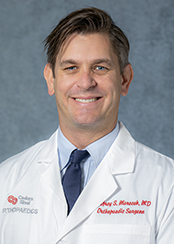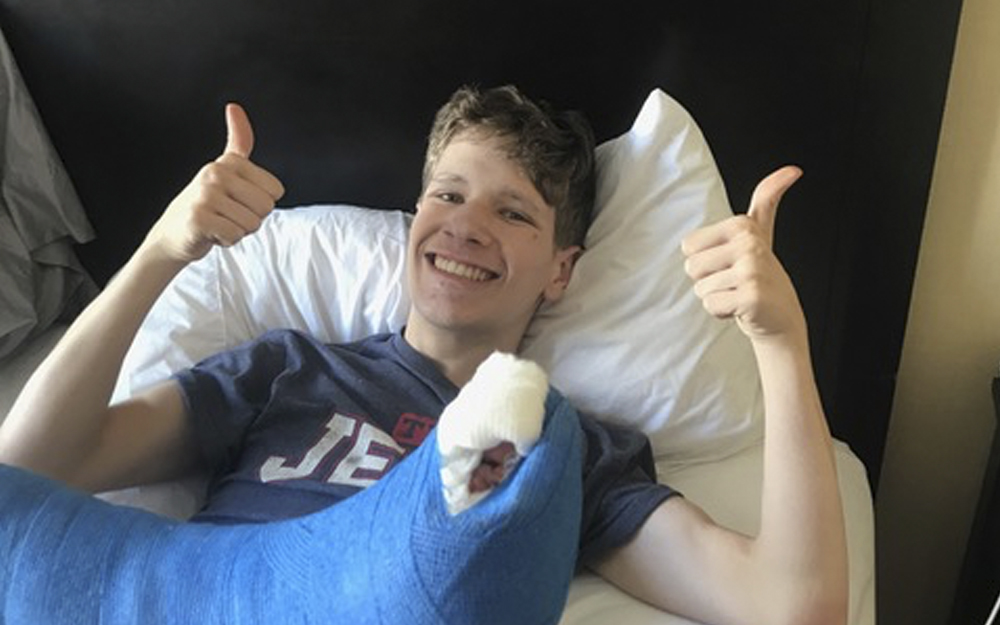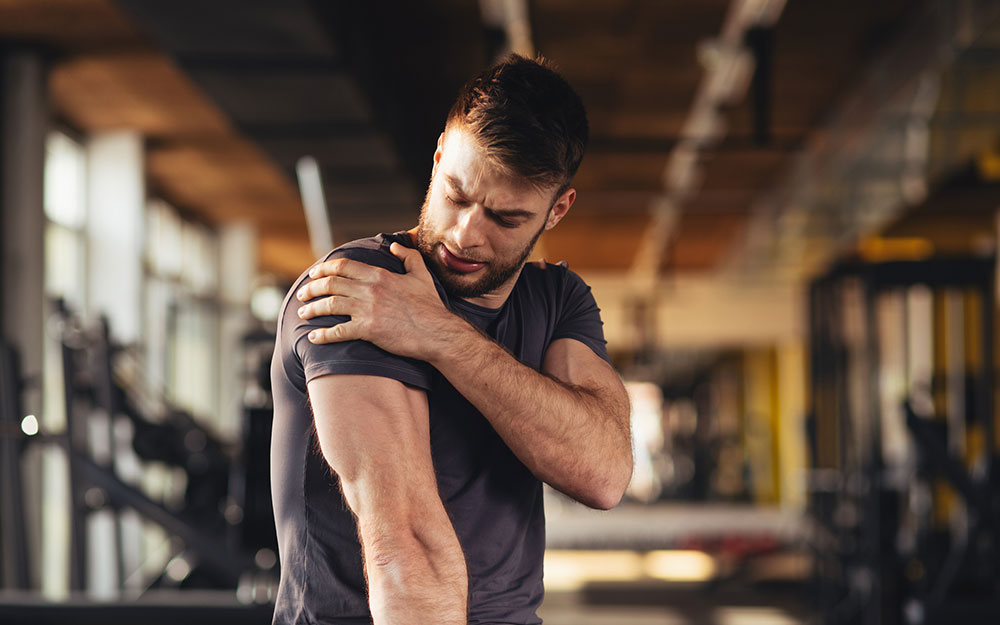Cedars-Sinai Introduces New Limb Reconstruction Program
Date
January 24, 2022

Date
January 24, 2022
Credits
Medical providers featured in this article
In Brief
{{cta-block}}
The new, comprehensive Limb Reconstruction Program at Cedars-Sinai is dedicated to caring for patients who have a threatened limb or have had an amputation.
"When we say a threatened limb, we are being intentionally broad, as patients may be told they need amputation for a variety of reasons—including post-traumatic, post-oncologic, vascular, lymphedematous and radiation injuries," says Geoffrey Marecek, MD, an orthopaedic trauma surgeon at Cedars-Sinai.
"Telling a patient they may lose their limb is devastating," says Marecek. "We are here both as a resource for physicians who are looking for the next level of support for their patient, and for patients who want a second opinion to feel more confident in their path forward."
While some form of limb salvage care is available at many institutions, Cedars-Sinai’s program brings core comprehensive structure to the evaluation and treatment process that incorporates the expertise of the many disciplines needed to achieve the best possible outcomes.
Collaborating to treat complex cases

The first step is to determine what type of reconstruction—amputation or preservation—is most appropriate. To do so, a multidisciplinary team comes together to take a holistic look at each individual patient. The team begins by identifying the factors impacting the patient’s condition and recovery and facilitates visits with the appropriate experts, then collaborates to determine the best course of treatment or surgery.
"At a minimum, limb reconstruction requires extensive and continuous collaboration between orthopaedics and plastic surgery," says Marecek. "But frequently there is also a need to involve trauma experts, infectious disease physicians, vascular surgeons, pain management, prosthetics and physical therapy. This helps ensure we are accounting for often overlooked issues including infection, blood supply or preexisting injury and skeletal deformity."
Together, the team is equipped to care for the most severe, complex cases—whether the patient presents immediately post injury or is experiencing new or prolonged complications after previous care. These cases often range from acute injuries, post-traumatic complications including limb length discrepancy or malunion, nonunions, fracture-related infection (osteomyelitis), congenital conditions and post-oncologic problems such as bone defects.
"Telling a patient they may lose their limb is devastating," says Marecek. "We are here both as a resource for physicians who are looking for the next level of support for their patient, and for patients who want a second opinion to feel more confident in their path forward."
Caring at the cutting edge
At Cedars-Sinai, patients have the rare opportunity to benefit from the latest research, technology and innovation. For example, Cedars-Sinai was the first institution in the West to use computer-driven automated technology to facilitate limb lengthening and deformity correction.
Traditionally, physicians would apply an external fixator with six moving struts. The patient is then responsible for turning these struts one to four times every day to achieve a correction. This approach, while largely effective, could cause significant stress and discomfort for the patient and sometimes result in equipment or user error. With the new technology, physicians create a care plan and upload it to the system, which can automatically perform up to 20 daily corrections without any action needed from the patient or their family.
"The technology separates the corrections into smaller segments throughout the day," says Marecek. "We program it to make small corrections hourly while the patient is awake. This is more comfortable for the patients because each adjustment is not so drastic, and the slow and steady pace results in better bone quality."
Marecek adds that the technology is a relief for many families, especially when the patient is a child or an aging parent.
"It’s a huge help," says Marecek. "It avoids the family dynamic of someone having to turn someone else’s struts. Oftentimes family members feel like they are causing pain, and the activity in general adds a source of conflict or tension to the daily routine."
Conducting all-internal bone transport, which avoids the use of external fixators altogether, is another way the team aims to increase patient comfort while maintaining an excellent standard of care. Bone transport is typically used to address large bone defects after tumor resection, after infection that requires dead bone removal or after bone loss from trauma. In the tibia, this typically means anything larger than 3 centimeters, while in the femur the defect is typically larger.
"There are two main ways to do all-internal bone transport," says Marecek. "The first is using the plate-assisted bone segment transport technique (PABST). We use the same nail used in limb lengthening to drive the bone transport, but also fix the patient’s leg with plates so the intact segments are held in proper position relative to each other. The second is through a specially designed bone transport nail used alongside a magnet that drives the transport for us. There are two options for the latter—one requires some modifications from its European form, while the other is still awaiting approval, but we hope it will be available soon."
While these methods do not reduce treatment or recovery time, both are preferable for eligible patients as they do not require a year or more of external fixation or the use of painful pins and wires.
"We look at the unique aspects of each case to determine the best treatment for each person and circumstance," says Marecek. "The benefit of coming to Cedars-Sinai is the high-quality, highly collaborative, cutting-edge care provided across all departments and treatment programs. We are happy and willing to take on the most challenging cases and are committed to continuously fostering the skills to do it. We are driven by our motivation to seek out the very best possible outcome for each patient, no matter their circumstance or previous experience."





